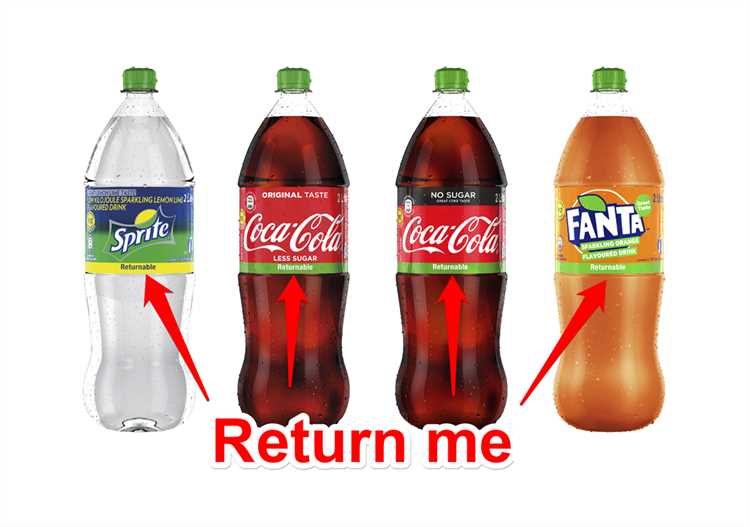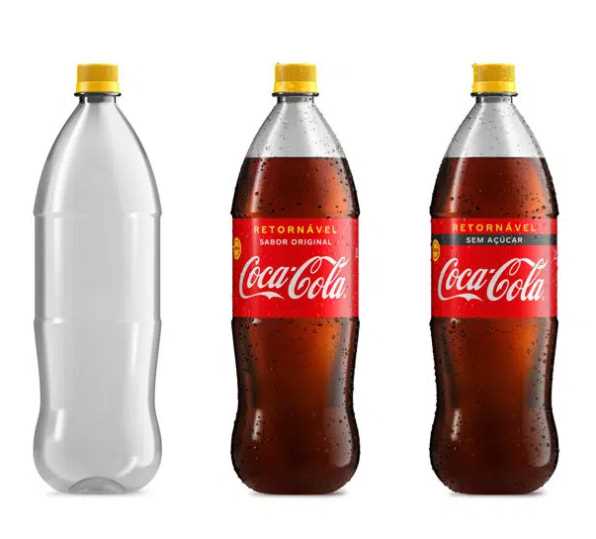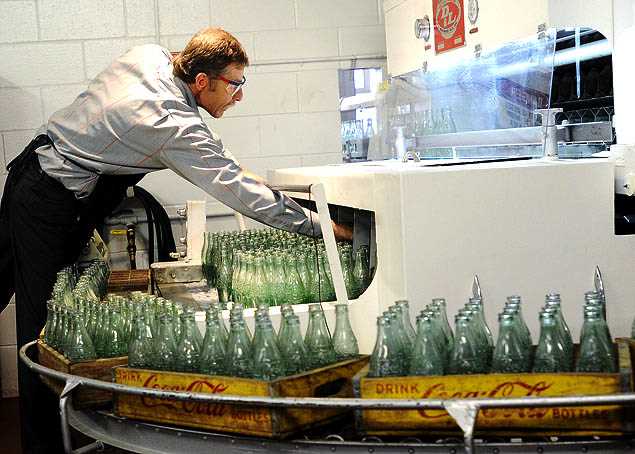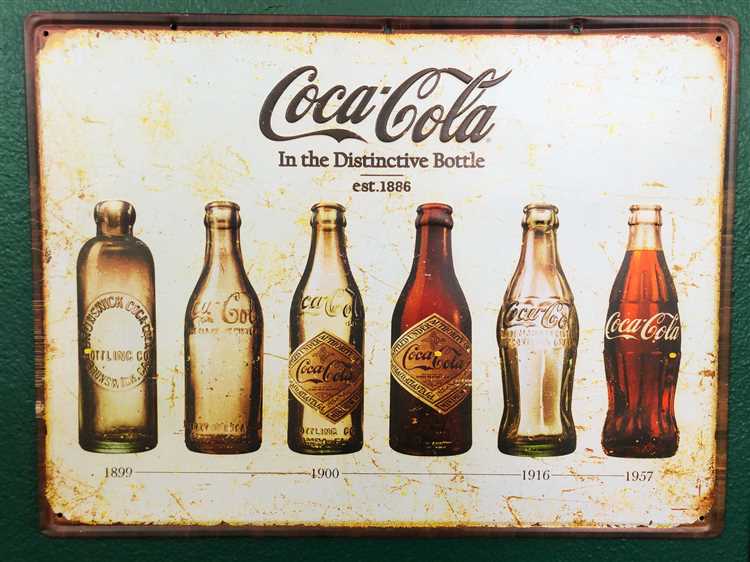
In a groundbreaking move, Coca-Cola, one of the world’s most iconic beverage companies, announced its decision to stop refilling bottles, marking a historic turning point in the company’s long-standing tradition. This bold decision highlights Coke’s dedication to sustainability and its commitment to reducing plastic waste, setting a new standard for the industry.
For decades, Coca-Cola has been synonymous with its distinct glass bottles, which have become a symbol of the brand. However, as environmental concerns continue to escalate, Coke recognized the urgent need to address the issue of plastic pollution. By discontinuing the practice of refilling bottles, the company aims to significantly reduce its carbon footprint and contribute to a more sustainable future.
This decision not only represents a major shift for Coca-Cola but also sends a powerful message to other beverage companies around the world. Coke’s leadership in this regard demonstrates that it is possible for multinational corporations to take a proactive stance on environmental issues and implement meaningful change.
The implications of this decision extend far beyond the beverage industry. Coke’s move to stop refilling bottles serves as a wake-up call for consumers and governments alike, highlighting the urgent need to address the global plastic waste problem. This milestone decision prompts us to rethink our consumption habits and consider more sustainable alternatives, urging us to opt for reusable containers and support initiatives that promote recycling and waste reduction.
In conclusion, Coca-Cola’s decision to discontinue refilling bottles signals a significant milestone in the company’s history and the wider industry. By taking this bold step towards sustainability, Coke sets an example for other corporations and inspires individuals to play an active role in preserving our planet. It is a reminder that every action, no matter how small, can make a difference, and that together, we have the power to create a more sustainable future.
- The Rise of Coca-Cola
- The Birth of the Coca-Cola Company
- Global Expansion
- A Popular Beverage in America
- Environmental Concerns
- The Rise of Plastic Pollution
- A Paradigm Shift in the Beverage Industry
- Coca-Cola’s Decision to Stop Refilling Bottles
- A Shift in Consumer Behavior
- The Impact on the Beverage Industry
- Q&A:
- Why did Coke decide to stop refilling bottles?
- How does this decision affect the environment?
- Was this decision well-received by consumers?
- What are the potential drawbacks of this decision?
- How does this decision impact Coke’s competitors?
- Why did Coke decide to stop refilling bottles?
The Rise of Coca-Cola

Coca-Cola has a rich history that dates back to the late 19th century. It all started in 1886 when John Pemberton, a pharmacist in Atlanta, Georgia, created a syrup made from coca leaves and kola nuts. He mixed this syrup with carbonated water, and the resulting beverage was sold as a medicinal tonic.
The Birth of the Coca-Cola Company
In 1892, Asa Candler, an entrepreneur with a keen business sense, acquired the rights to Coca-Cola. Under Candler’s leadership, the Coca-Cola Company began to rapidly expand. Candler was not only a skilled businessman but also a master marketer. He recognized the importance of branding and advertising, and he used these tools to put Coca-Cola in the hands of consumers around the world.
Throughout the early 20th century, Coca-Cola became synonymous with American culture. The distinctive red and white logo, known as the “Dynamic Ribbon,” became instantly recognizable. Coca-Cola was not just a beverage; it represented a certain lifestyle and an image of happiness.
Global Expansion
The popularity of Coca-Cola continued to grow, and the company quickly expanded its reach internationally. In 1919, Coca-Cola made its way to Europe, and by the 1920s, it had established a strong presence in countries such as France, Germany, and the United Kingdom. Today, Coca-Cola is sold in over 200 countries worldwide.
In addition to its international expansion, Coca-Cola also introduced new products and innovations over the years. In 1982, the company launched Diet Coke, followed by Coca-Cola Zero in 2005. These low-calorie and zero-sugar options allowed Coca-Cola to cater to a wider range of consumer preferences.
The success and rise of Coca-Cola can be attributed to many factors, including strong leadership, effective marketing, and a commitment to innovation. Over the years, Coca-Cola has established itself as one of the most iconic and beloved brands in the world, with a history that spans over a century.
A Popular Beverage in America
Coca-Cola, commonly known as Coke, is one of the most popular beverages in America. Since its creation in 1886, Coke has become an iconic drink that is enjoyed by millions of people across the country. Whether it’s at a family barbecue, a sporting event, or just a casual gathering, Coke has always been a staple on American tables.
What makes Coke so popular? One reason is its unique and refreshing taste. The combination of carbonation, sweetness, and a hint of acidity creates a flavor that is loved by many. The consistency and quality of Coke’s taste have remained consistent throughout the years, making it a reliable choice for those who crave a cold, fizzy drink.
In addition to its taste, Coke’s marketing strategies have played a significant role in its popularity. From catchy jingles to memorable commercials, Coke has successfully ingrained itself in American culture. The company’s advertisements often evoke feelings of happiness, togetherness, and nostalgia, which resonates with consumers and creates an emotional connection to the brand.
Furthermore, Coke has been relentless in its efforts to maintain a wide distribution network. It is available in almost every grocery store, restaurant, and vending machine in the country. This accessibility ensures that consumers can easily find and purchase their favorite beverage whenever they desire.
Overall, Coke’s popularity in America can be attributed to its distinct taste, effective marketing, and widespread availability. It has become a beloved beverage that is deeply rooted in American society, and its impact cannot be overstated. Despite the recent decision to stop refilling bottles, Coke will continue to be a beloved and iconic brand in the United States.
Environmental Concerns
One of the primary drivers behind Coke’s decision to stop refilling bottles was a growing concern for the environment. As the negative impacts of plastic waste began to emerge, the company recognized the need to address this issue and take responsibility for its role in pollution.
Coke’s decision to discontinue refilling bottles was seen as a significant step towards reducing plastic waste. By transitioning to single-use bottles, the company aimed to encourage recycling and reduce the amount of plastic that ended up in landfills and oceans.
With its massive production and distribution network, Coke recognized the potential impact it could have on the environment. By eliminating the practice of refilling bottles, the company aimed to decrease its carbon footprint and minimize its contribution to global pollution.
The Rise of Plastic Pollution
Plastic waste has become a global crisis, with millions of tons of plastic entering the environment every year. The long lifespan of plastic, combined with its improper disposal and inadequate recycling infrastructure, has led to massive environmental damage.
Plastics are known to take hundreds of years to degrade, causing significant harm to wildlife, ecosystems, and human health. As plastic bottles became a popular choice for beverages, their contribution to the plastic waste problem became increasingly evident.
A Paradigm Shift in the Beverage Industry
Coke’s decision to stop refilling bottles marked a turning point in the beverage industry. It signified a shift towards prioritizing sustainability and addressing the environmental concerns associated with single-use plastics.
The decision challenged the traditional business model of refillable bottles and set the stage for other companies to follow suit. Coke’s leadership in adopting more sustainable practices influenced the industry and raised awareness about the urgent need for change.
Furthermore, by focusing on recycling and introducing initiatives to promote sustainable packaging, Coke continued to contribute to environmental conservation and advocate for a greener future.
Coca-Cola’s Decision to Stop Refilling Bottles

In a historical turning point for the Coca-Cola company, they made the decision to stop refilling bottles. This decision had far-reaching implications for the environment, the beverage industry, and consumer behavior.
Coca-Cola, known for its iconic glass bottles, had a long history of refilling and reusing their containers. However, as the company grew and expanded globally, it became increasingly difficult to manage the logistics of collecting and cleaning used bottles. As a result, Coca-Cola made the difficult decision to transition to single-use, disposable plastic bottles.
This decision sparked a significant shift in consumer behavior and contributed to the rise of disposable packaging in the beverage industry. With the introduction of plastic bottles, Coca-Cola was able to reach a wider customer base and increase convenience for consumers.
However, this shift also had negative consequences for the environment. Plastic bottles have become a major source of pollution, with millions of them ending up in landfills, oceans, and other natural habitats. The decision to stop refilling bottles significantly contributed to this environmental crisis.
Despite the negative impact on the environment, Coca-Cola’s decision to stop refilling bottles marked a turning point in the industry, as other beverage companies followed suit. The convenience and cost-effectiveness of disposable bottles became the norm, and the practice of using refillable containers became increasingly rare.
Today, Coca-Cola and other beverage companies are under increasing pressure to address the environmental impact of their packaging choices. Many consumers are demanding more sustainable alternatives, and governments and organizations are implementing regulations and initiatives to reduce plastic waste.
Looking back, Coca-Cola’s decision to stop refilling bottles was a significant moment in history. It marked the beginning of a new era in the beverage industry, one that prioritized convenience over sustainability. As we face the consequences of this decision today, it serves as a reminder of the importance of responsible packaging choices and the need for a more sustainable future.
A Shift in Consumer Behavior
The decision by Coke to stop refilling bottles marked a significant shift in consumer behavior. In the past, consumers were accustomed to purchasing a bottle of Coke and then returning it for a refill. This model of reusing bottles was not only economically efficient but also environmentally friendly.
However, as the convenience of single-use, disposable bottles grew in popularity, consumers began to favor the ease of simply discarding their empty bottles. This change in consumer behavior meant that the demand for refilled bottles decreased, leading Coke to make the difficult decision to discontinue their refill service.
This shift in consumer behavior had far-reaching implications for the industry. It signaled a move towards a more disposable culture, where convenience and instant gratification took precedence over long-term sustainability. Many other companies followed suit and began offering single-use bottles, further exacerbating the environmental impact.
While the decision to stop refilling bottles may have made economic sense for Coke at the time, it was a turning point in the history of consumer behavior. It marked a shift away from a more environmentally conscious mindset towards a culture of convenience and disposability.
The Impact on the Beverage Industry

The decision by Coke to stop refilling bottles had a significant impact on the beverage industry. This move was a major departure from the industry norm and sparked a wave of change in how beverages were packaged and sold.
Firstly, the decision forced other beverage companies to rethink their own packaging strategies. With Coke leading the way, many companies followed suit and moved towards single-use packaging options like cans and plastic bottles. This shift had a lasting effect on consumer behavior, as people became accustomed to the convenience of buying pre-packaged beverages.
Additionally, the shift towards single-use packaging had environmental implications. The increase in plastic bottles and cans meant an increase in waste, leading to concerns about recycling and pollution. This led to greater awareness and calls for sustainability within the industry, with companies being urged to find more eco-friendly packaging solutions.
Furthermore, the decision by Coke to stop refilling bottles had a ripple effect throughout the beverage supply chain. The shift towards single-use packaging required changes in manufacturing processes, distribution methods, and marketing strategies. Companies had to invest in new equipment and infrastructure to produce and distribute pre-packaged beverages, and marketing campaigns had to be adapted to promote the new packaging formats.
Overall, Coke’s decision to stop refilling bottles was a landmark moment in the beverage industry. It not only changed how beverages were packaged and consumed but also had wide-reaching effects on sustainability and the supply chain. The industry continues to evolve and adapt to consumer demands and environmental concerns, with the legacy of Coca-Cola’s decision still being felt today.
Q&A:
Why did Coke decide to stop refilling bottles?
Coke decided to stop refilling bottles for several reasons. One reason is the increasing concern for hygiene and the need for single-use packaging. Another reason is the shift towards convenience and the demand for ready-to-drink beverages. Coke also wanted to adapt to the changing market trends and consumer preferences.
How does this decision affect the environment?
This decision has a positive impact on the environment. By stopping the refilling of bottles, Coke reduces the amount of plastic waste generated. Single-use bottles can be recycled, reducing the need for new plastic production. Additionally, it promotes the use of other eco-friendly packaging options, such as paper and biodegradable materials.
Was this decision well-received by consumers?
The reception of this decision varied among consumers. Some supported the move towards single-use packaging for convenience and hygiene reasons. Others, however, were concerned about the environmental impact and preferred the option of refilling bottles. Overall, the decision received mixed reactions from consumers.
What are the potential drawbacks of this decision?
One potential drawback of Coke’s decision to stop refilling bottles is the increase in plastic waste. Single-use bottles contribute to the growing plastic pollution problem. Additionally, there may be some consumers who prefer the taste or experience of drinking from a refillable bottle and may be disappointed with the change. Finally, the transition to new packaging options may come with additional costs for the company.
How does this decision impact Coke’s competitors?
This decision can impact Coke’s competitors in a few ways. First, it sets a precedent in the industry and may encourage other companies to follow suit and switch to single-use packaging. Second, it gives Coke a competitive advantage if they are able to market their new packaging options as more environmentally friendly. However, if consumers prefer the option of refilling bottles, it could potentially drive them to competitors that still offer this option.
Why did Coke decide to stop refilling bottles?
Coke decided to stop refilling bottles for several reasons. Firstly, the process of refilling bottles was time-consuming and costly for the company. Secondly, there was a growing demand for convenience among consumers, who preferred single-use bottles that were ready to drink. Lastly, Coke wanted to reduce its environmental impact and saw the switch to single-use bottles as a way to do so.